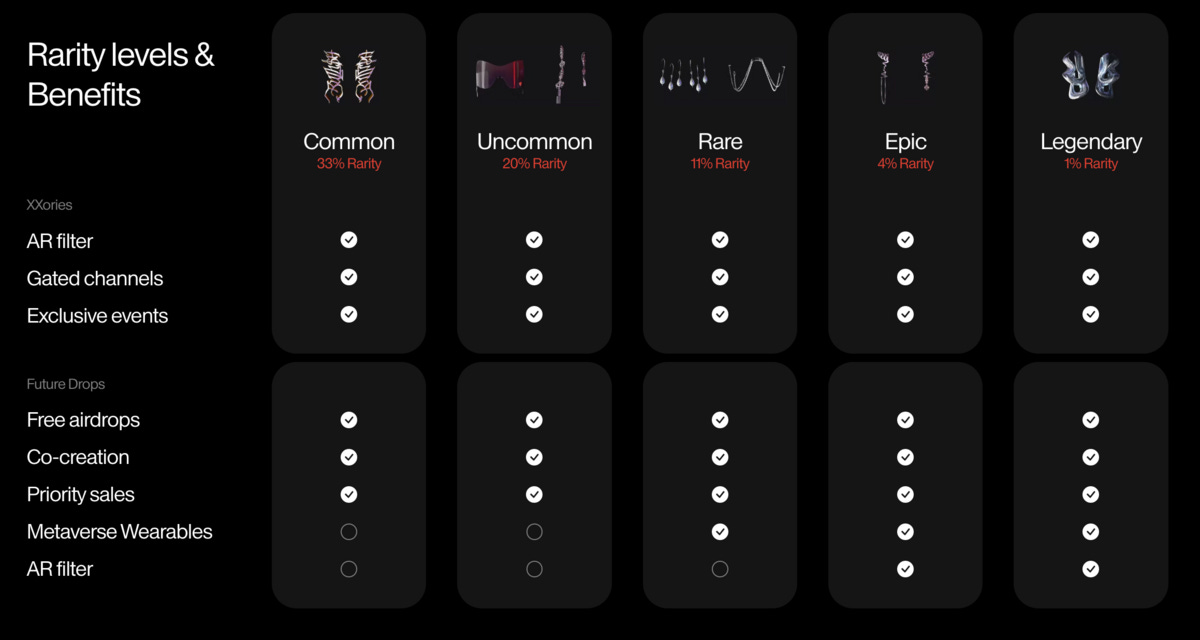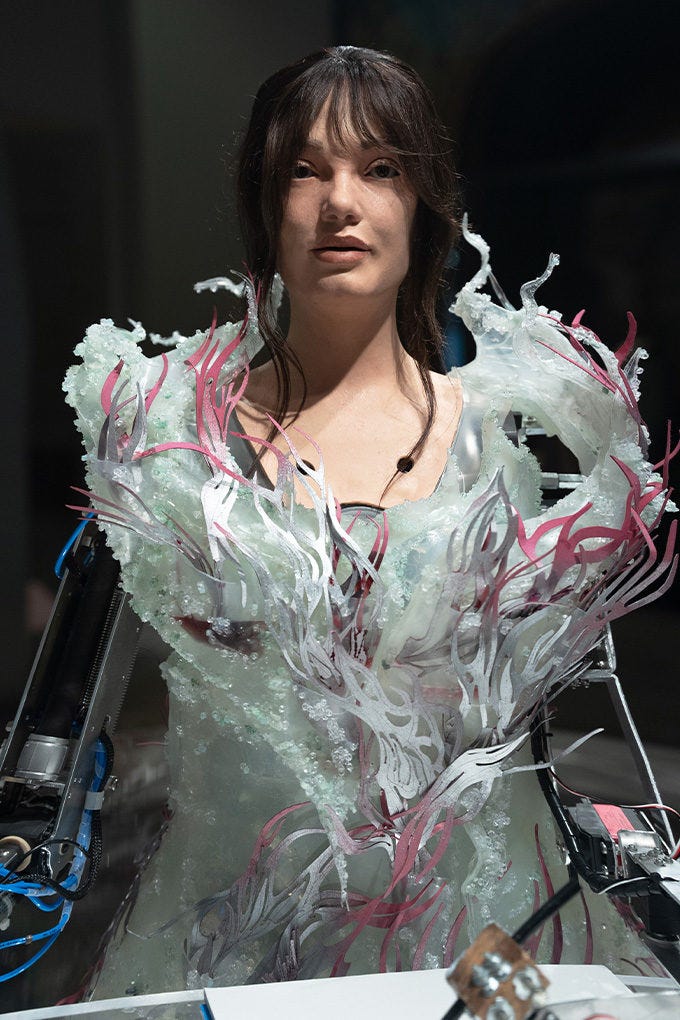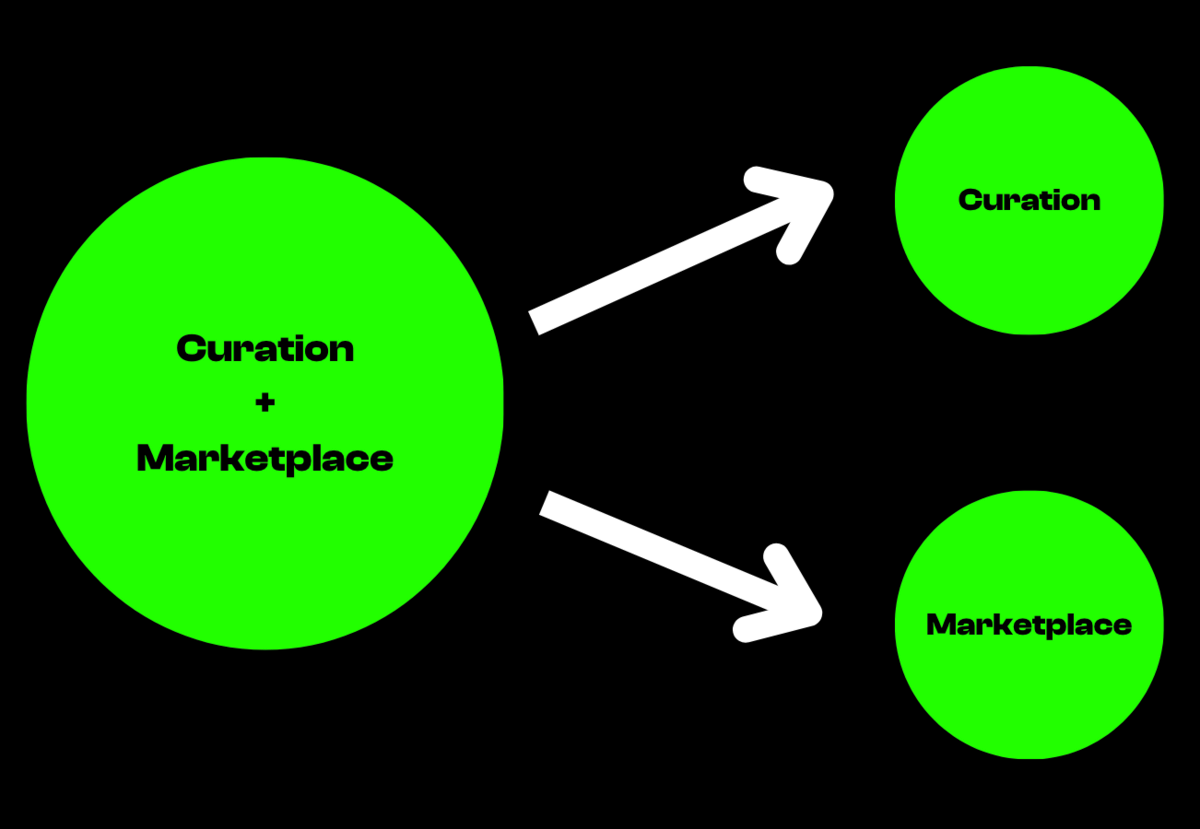Web3 Landscape One Year Review – Fashion Houses 🏠
Subscribe to a free weekly newsletter or upgrade to paid to receive exclusive access to my archived deep dives on the Fashion/Culture/Luxury NFT markets.
Hi everyone!
I’ve had the fortune of researching Web3 Fashion since 2021 and crypto since 2017. During these years I’ve noticed the benefits but also the dangers of following Web3 news religiously.
While, we all get a kick out of reading the daily news on AI, NFTs and the latest Web2 brands entering the space, it’s easy to lose sight of the bigger picture.
On January 25th, 2022, I posted this infographic. While not perfect, as far as I know, it was the first Web3 Fashion landscape graphic ever made. I thought it would be fun and informative to see how the Web3 landscape has developed since then.


In this post, I’ll be zooming out and giving you a better understanding of some of the more significant developments across the Web3 Fashion landscape.
In this article, I’ll be covering the development of Web3 fashion houses.
Weekly Web3 Fashion Data
The Original Fashion Houses
CULT&RAIN – Following the Latest Tech
A phygital brand that launched its Genesis collection in February 2022. Initially, the focus was on phygital sneakers, however, their second drop (Drop 001) was a phygital varsity jacket. The NFTs gave holders the right to claim physical counterparts as well as a CULTR_PASS, a membership pass offering VIP access to the CULT&RAIN Ecosystem. The pass offered discounts and access to airdrop rewards.


However, their latest drop Drop 2: Virgo Hoodie, reflects the changing meta or trends within Web3 Fashion (you’re probably familiar with these by now if you’ve been following The Naked Collector). These include:
NFC chip — The hoodie will connect the digital with the physical via an NFC chip. They’re using LTD.INC as their tech partner. You can read my Twitter post on NFC chips here and here.
AI – The Virgo Hoodie will feature four AI-generated print designs. You can read more about specific AI design use cases here and here.
AR – The hoodies also come with AR wearables powered by DressX. To learn more about the potential of AR and 3D assets in fashion you can read my piece: The Evolution of Digital Assets: The Significance of 3D + AR for Fashion Brands and NFTs
Metaverse – CULT&RAIN is also rolling out its metaverse (an interactive party and shopping experience) built by SwivelMeta CULTR WORLD.
What to watch: CULT&RAIN’s culture creation, from quality clothing to an identifiable brand. It’s one thing to create phygital pieces, another is to create a sustainable culture behind them. They’re trying to do so via free mints, discounts, VIP access and the development of their metaverse platform CULTR WORLD.
Funding: N/A
RTFKT – PFP-Led Collections
To start off, RTFKT could definitely be placed in the PFP category as the majority of its trading volume comes from Clone X. However, since they have several other asset categories, I classified them as a fashion house a year ago.
Difficulties of transitioning from a Web3 native fashion house to one owned by Nike. This undoubtedly has created more obstacles in offering perks to holders and communicating with holders. The RTFKT ecosystem NFT average and floor prices have dropped significantly in part due to this increased tension. I wrote a deep dive on the reasons for RTFKT’s “fall from grace”.
The highlights of the RTFKT ecosystem have been the introduction of new phygital and digital-only assets as well as introducing of their metaverse.
RTFKT’s highlights over the past year (and one lowlight):
Growth of Clone X into one of the leading PFP and Web3 Fashion projects. All of RTFKT projects combined made up almost 70% of the Web3 Fashion market in 2022 (see below).
The CloneX SZN 1 collection marked the first phygital wide-scale PFP-led collection. It designed the line with PFPs and their traits in mind.
The Exodus metaverse in late January revealed RTFKT’s metaverse plans.
The relatively bad performance of their cIRL shoe was a result of underwhelming benefits to holders and legal/corporate issues. Discussed in the article above.
What to watch: The actual quality of the Clone X SZN 1 physical fashion line. Some have complained about their supposedly low quality based on preview images.
The content of MNLTH X (MNLTH3 in the graphic above). The MNLTH’s reveal mystery assets to their holders.
How The Exodus metaverse fits into RTFKT’s narrative.
Potential celebrity endorsements. Several celebrities have sported Clone Xs as their social media avatars (read about the importance of celebrities for fashion brands here).
Funding: $9.5M seed round in April 2021 (acquired by Nike in December 2021)
The Fabricant – Platformization
One of the earliest digital fashion houses, The Fabricant, has developed from a design studio to an NFT platform focused on co-creation. They were founded in 2018 and collaborated with brands like Puma on digital fashion outfits already in 2021.
If there’s one word that summarizes The Fabricant’s development over the past year or so, it’s ”collaboration”.
Ever since their second collection, they’ve partnered with other artists or the community to create their pieces. They’re effectively transitioning from creating pieces themselves to collaborating with the community. On the one hand, this exemplifies Web3 culture, on the other, it offers scalability advantages.
The Fabricant’s strategy gives a glimpse into some of the trends within digital fashion:
PFP collaboration – The Fabricant created a collection for World of Women holders. As I’ve shown through data, PFPs dominate NFT volume. Thus, it isn’t the worst idea to partner with a PFP project (just ask Nike) as long as the values align. To use Adidas as an example, not only was their initial Into the Metaverse launch successful due to their Bored Ape Yacht Club connection, but they recently announced they’ll be launching their own PFPs.
Inclusivity – Especially with its latest WHOLELAND collection, The Fabricant leans heavily into the narrative of inclusivity. We’ve seen inclusivity being highlighted in some PFP collections as well as digital fashion. In fact, there seems to be a bit of tension within Web3 Fashion between the “PFP bros” and “digital high fashion”. I think both sides have good and bad qualities.
Platformization – Ever since Web1 days of AOL portals, we’ve seen internet companies use platforms as business moats. In some ways, The Fabricant along with DRESSX and even RTFKT are doing so by giving creators the best creator tools via their co-creation platforms. These tools can be things like community, 3D assets, educational content or monetization options. These new platforms seek to bring back the power to the creators in return for creator loyalty.
An interesting parallel is Fortnite’s new “creator platform” Unreal Editor for Fortnite. This update allows users to create custom experiences in Fortnite using Unreal Engine 5. Moreover, Fab, the Epic Games marketplace launching later this year will let creators keep 88% of their revenues. By creating custom experiences the players’ switching cost and platform stickiness increase.
What to watch: The ability to attract creators and the rolling out of its decentralization plans.
How to know which platform will win? Looking at human behavior, social media has been about status or the potential to reach a level of status i.e. money or reputation.
YouTube → Be the next Justin Bieber or MrBeast
IG → Have the next billion-dollar product line
TikTok → Create a personal brand from one viral video
The winner of these platforms will be the one that caters to users gaining status in other words empowers the user.
Funding round: $14M Series A in April 2022
Auroboros – Awards Equals Monetization?
Auroboros is known for creating intricate AR outfits for London Fashion Week Grimes, and winning the LVMH's Sustainability Prize. However, they seem to be pivoting toward a fresh start. The AR dresses on DRESSX, its own marketplace and the Auroboros Vault seem to have been scrapped.
Their next collection will launch during Decentraland’s 2023 Metaverse Fashion Week. However, we have to remember that the 30-day trading volume for Decentraland Wearables’ is only $5K on Opensea and $344K primary + secondary volume on Decentraland’s own marketplace. For context, Bored Ape Yacht Club’s 24-hour volume is >$1M. Moreover, Decentraland wearable’s performance strongly correlates to the Decentraland token’s, MANA, price action.
Even with the exciting Metaverse Fashion Week showcases, the question is whether selling Decentraland wearables alone is sustainable in the long run. Moreover, some of the intricate details and nuances that make digital fashion unique don’t always translate well.
What to watch: Auroboros’ ability to transform high-quality AR garments and the gained publicity into a long-term business model.
Funding: $1.7M (according to Forbes)
Space Runners – From a Wear2Earn Metaverse to Web2 Collabs
Space Runners is an interesting project. What started out as a playful sneaker house for basketball shoes on Solana, is now collaborating with Balmain on their new phygital shoe (buyers get a physical Balmain shoe as well as an NFT that gives access to future drops).


Looking at the funding history of notable funds like Pantera, Accel and Jump Crypto, it’s safe to say they were likely more attracted to the project’s metaverse/play-to-earn nature than its fashion aspect.
The difficulty with social games, not to mention metaverses, is that to create an attractive value proposition to the player you have to gain network effects. Volume is a decent proxy for project interest. Space Runners’ 130.6K SOL, or ~$2.62M using Solana’s current price, lifetime volume on Solana’s largest marketplace, doesn’t seem to be enough.
It seems like Space Runners’ second coming seems to be transitioning to Ethereum. Its new drop will take place on Ethereum and the Balmain NFT was minted on Ethereum. This leads to questions about Space Runners’ metaverse plans. Solana is usually chosen due to its low transaction fees which are conducive to gaming experiences. If the brand shifts to Ethereum the metaverse/gaming economics will likely become more expensive. Also, we have to note that there aren’t really any successful cross-chain NFT projects (y00ts is migrating on the 27th of March, while the Doodles 2 collection has yet to roll out on Flow).
Here are a few takeaways from Space Runners:
Metaverse hype – Many Web3 projects (not just fashion) wanted to build out metaverses, however, as the metaverse hype is gone it can leave projects in a difficult position. A project should always have a unique North Star.
Web2 brands collabs – Web3 projects are increasingly partnering with Web2 brands. Not only is this good PR, but it also creates cash flows (assuming Web3 brands act as agencies). On the other hand, this raises consumer-side questions including
What happens to the Web3 project’s original NFTs?
Are these projects following the RTFKT acquisition playbook?
Is the purpose to become an infrastructure layer for Web2 brands?
There’s nothing inherently wrong with these, however, there can be potential conflicts with original NFT holders if not handled correctly.
What to watch: Space Runners’ ability to transition from Solana to Ethereum. The Balmain collaboration was a good way to revitalize the brand. Let’s see how the next collections on Ethereum revitalize the Space Runners story.
Funding: $10M seed round
Where We Are Today
Several fashion houses aren’t mentioned in my original Web3 Fashion Landscape. Brands like Tribute Brand (funding: $4.6M), BNV (funding: $4.6M), CodeCouture and even newcomers like Draup (funding: $1.5M) and RSTLSS (funding: $3.5M) could, in part, be categorized as fashion houses.
However, it seems that gone are the days of fashion houses with one-off drops. For instance, Tribute Brand, RSTLSS or The Fabricant assets act as an entry into an ecosystem instead of being just wearables. In fact, it’s likely that these assets are currently priced mostly based on their ecosystem potential instead of design merits. There’s also a reason Nike chose a membership pass instead of a fashion piece as its genesis NFT.
Instead, Web3 fashion houses have generally been doing one of the two:
Shift toward a platform model (create new demand)
Associate with bigger brands (use existing demand)
Because the demand for Web3 fashion is still modest, projects have to either create demand via new experiences that offer more than just fashion (i.e. platforms) or use existing demand (i.e. partner with legacy brands) to bring in Web2 consumers. Both are risky. The former takes a lot of time and resources and isn’t guaranteed to succeed. The latter doesn’t guarantee that legacy brands will utilize their existing customer base as we saw with the Porsche NFT mint. If existing customer bases aren’t utilized, we come full circle whereby Web3 natives end up being the buyers. Web3 consumers tend to have expectations and not fulfilling those can hurt brands and their partners.
Finally, a not-so-discussed topic, is that fashion designers can very well join PFP brands directly. In some ways, this makes sense since these Web3 brands already have the distribution and reach. Case in point, Doodles’ current Chief Brand Officer is also Louis Vuitton’s creative director. Moreover, the Gucci and Yuga ecosystem partnership just got deeper.


In addition to platformization and partnerships, one thing that could benefit these independent Web3 fashion houses is a vibrant economy around AR assets. The obvious reason why AR assets haven’t taken off is lagging hardware, however, I think an even more important factor is curation. Current infrastructure providers like ZERO10 and DRESSX provide interesting AR rails, however, I’d argue that we need the Art Blocks (or BrainDrops) of augmented art. A platform that focuses on:
1) Deliberate curation – It was thanks to Art Blocks’ Curated section that Art Blocks and generative became household concepts. Business-wise limiting supply doesn’t make sense for infrastructure platforms, thus, we need a strong independent platform (not a marketplace); a platform like Art Blocks that does mainly one thing and does it well. There’s a reason Art Blocks didn’t launch a marketplace for almost 2.5 years (and it’s doing so now mainly to protect artist royalties). Strong curation is important for creating demand and for collectors. Just because we can create unlimited assets sustainably, doesn’t mean we should. There’s a certain trustworthiness that comes with separating curation from the marketplace. NFTs are tarnished by the reputation of being salesy as it is, curation mitigates that.
Moreover, I don’t think celebrity curation works. Just like the marketplace + curation combo it gives off too heavy H&M/Boohoo vibes. To succeed, I believe the curation board should consist of an eclectic mix of people such as digital fashion designers, scientists, collectors, Web3 natives, investors, musicians and traditional designers.
2) On-chain provenance – It’s important that luxury AR assets are ERC721 and can be traded on any NFT marketplace instead of being limited to a centralized marketplace. There’s a place for proprietary marketplaces, but the holders should ultimately have the choice. For me, it’s always a red flag if I can’t easily find the asset’s smart contract address. The transparency of decentralized marketplaces can be scary, however, collection success all comes back to intentionality (incl. curation). After all, NFTs are as much an innovation in asset distribution as they are in asset creation.
Thanks for Reading!
Upgrade to the paid subscription to access The Naked Collector archives and receive my Web3 Fashion 2022 report.
DM me on Twitter or email me at enquiries@nakedcollector.xyz if you want to learn more about Web3 Fashion or collaborate. I’m constantly looking to work with new projects.
Want More?
Partnerships/Sponsorships/Enquiries: enquiries@nakedcollector.xyz
Top Naked Collector articles:
Author Bio
I focus on the cross-section of NFTs, crypto and fashion:
Naked Collector has been the top Web3 Fashion research/data source since 2021
6 years of experience in the crypto markets (crypto/DeFi/NFTs)
Part of 100+ NFT communities












